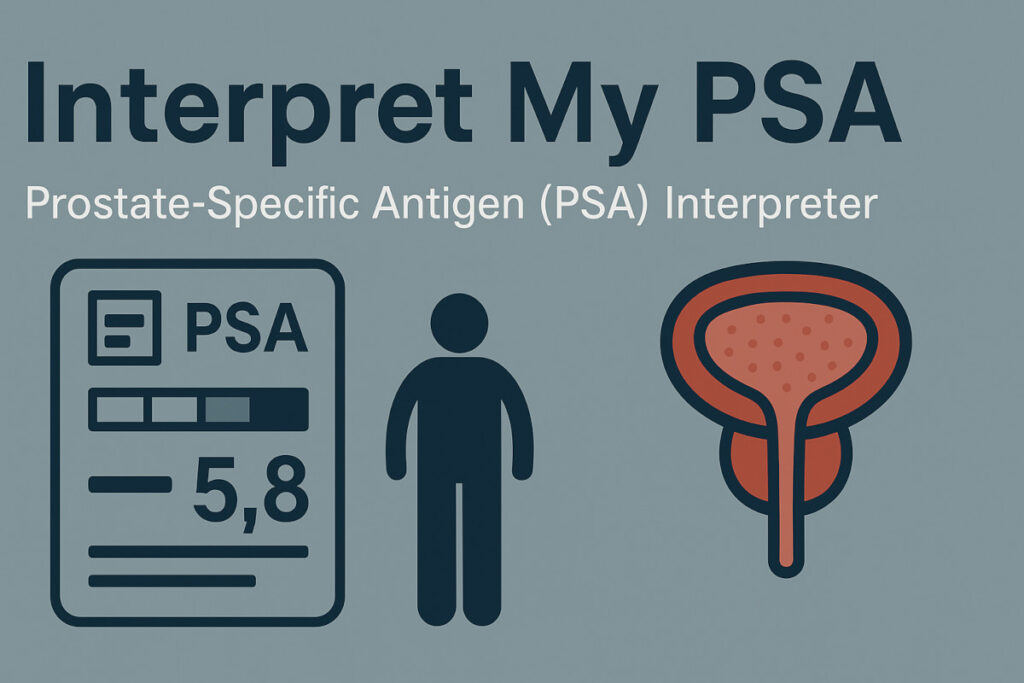Last Updated on August 23, 2025 by Max
Introduction
Erectile dysfunction (ED) is a topic that often sparks curiosity, confusion, and concern among men and their partners. Despite its prevalence, misconceptions, and myths about ED continue to circulate, perpetuating misunderstanding and misinformation. In this blog post, we aim to dispel these common misconceptions, shedding light on the true nature of erectile dysfunction, its causes, treatments, and risk factors. By providing accurate and up-to-date information, we hope to empower readers to make informed decisions about their sexual health and well-being. So, let’s dive in and separate fact from fiction as we explore the world of erectile dysfunction.
- Introduction
- Are there professions associated with a higher risk of developing erectile dysfunction?
- Is erectile dysfunction (ED) a normal part of aging?
- Can only older men experience ED?
- Do lifestyle choices like smoking, alcohol consumption, and diet not impact ED?
- Is ED always a chronic condition, or can it be temporary?
- Can recreational drug use contribute to ED?
- Do all men with ED have low testosterone levels?
- Can certain medications cause or worsen ED?
- Is it true that only men with heart disease are at risk of developing ED?
- Can excessive cycling cause erectile dysfunction?
- Can pelvic floor exercises improve erectile dysfunction?
- How is erectile dysfunction diagnosed?
- Is the prevalence of erectile dysfunction among men in the adult film industry comparable to that in the general population?
- References
Are there professions associated with a higher risk of developing erectile dysfunction?

Certain professions may be associated with a higher risk of developing erectile dysfunction (ED) due to various factors, such as psychological stress, physical strain, or exposure to harmful substances. Here are some examples of professions that may be more inclined to develop ED:
- Long-distance cyclists: Long-distance cycling may contribute to ED due to the pressure exerted on the perineum, affecting the nerves and blood vessels responsible for erections [1].
- Truck drivers: Prolonged sitting, whole-body vibration, and exposure to exhaust fumes can increase the risk of ED in truck drivers [2].
- Shift workers: Shift work, particularly night shifts, can disrupt the body’s circadian rhythms, leading to sleep disturbances, hormonal imbalances, and increased stress, all of which can contribute to ED [3].
- High-stress occupations: Jobs with high-stress levels, such as first responders, military personnel, and healthcare workers, can increase the risk of developing ED due to the impact of chronic stress on hormonal balance and cardiovascular health [4].
- Workers exposed to chemicals or radiation: Occupations involving exposure to harmful substances, such as pesticides, heavy metals, or ionizing radiation, may increase the risk of ED due to the potential impact on reproductive health and hormonal balance [5].
It is important to note that these professions do not guarantee the development of ED, but they may pose a higher risk due to specific occupational factors. Maintaining a healthy lifestyle, managing stress, and addressing any underlying health conditions can help reduce the risk of developing ED.
Is erectile dysfunction (ED) a normal part of aging?
While it’s true that the prevalence of erectile dysfunction increases with age, it is essential to recognize that ED is not an inevitable consequence of getting older. Many men continue to have healthy and satisfying sex lives well into their senior years. That means age-related factors can contribute to the development of ED, making it more common among older men.
Various physiological changes occur as men age, such as reduced blood flow, decreased hormone levels, and a higher likelihood of developing chronic health conditions like heart disease and diabetes. All these factors can potentially impact erectile function. For example, a study published in the Journal of Sexual Medicine found that the prevalence of ED among men aged 40-49 was 5.1%, while it increased to 70.2% for men aged 70 and above [6].
Despite these statistics, it’s crucial not to view ED as a “normal” part of aging. Many cases of ED can be successfully treated, and older men should not hesitate to seek help from a healthcare professional if they experience difficulties with their sexual function.
Can only older men experience ED?
Erectile dysfunction is often mistakenly considered a condition exclusive to older men. ED can affect men of all ages, including younger individuals. Various physical and psychological factors can contribute to ED in younger men.
Physical factors leading to ED in younger men include hormonal imbalances, obesity, and chronic health conditions such as diabetes or cardiovascular disease. In a study published in JAMA Network Open, researchers found that among men aged 18-40, 26% reported experiencing ED, with 11.8% suffering from mild ED, 7.3% from mild-to-moderate ED, 6.3% from moderate ED, and 0.6% from severe ED [7].
Psychological factors can also play a significant role in the development of ED among younger men. Performance anxiety, stress, depression, and relationship issues can all contribute to sexual dysfunction. Psychological causes are more common among younger men with ED than older individuals.
The key takeaway is that erectile dysfunction can affect men of all ages, and it is essential to be aware of the risk factors and seek help if necessary. Early intervention can help address underlying issues and significantly improve sexual function and overall quality of life.
Do lifestyle choices like smoking, alcohol consumption, and diet not impact ED?

Contrary to this common misconception, lifestyle choices can significantly impact erectile dysfunction. Making healthier choices may help prevent or even reverse ED in some cases. Let’s discuss the impact of smoking, alcohol consumption, and diet on ED.
Smoking: Smoking can damage blood vessels and decrease blood flow throughout the body, including to the penis. Studies have shown that smoking men are more likely to develop ED than non-smokers. A review published in the American Journal of Epidemiology found that men who smoked had a 51% increased risk of ED compared to non-smokers [8].
Alcohol consumption: While moderate alcohol consumption may not significantly impact erectile function, excessive alcohol intake can contribute to ED. Alcohol can act as a depressant, temporarily impairing the nervous system’s ability to sustain an erection. Moreover, long-term heavy drinking can cause liver damage, hormonal imbalances, and nerve damage, all of which can contribute to ED [9].
Diet: A healthy diet is essential for maintaining overall health, including sexual function. Consuming a diet high in processed foods, unhealthy fats, and added sugars can increase the risk of obesity, diabetes, and cardiovascular disease, all associated with ED. On the other hand, a diet rich in fruits, vegetables, whole grains, and lean protein sources, such as the Mediterranean diet, has been linked to improved erectile function [10].
Is ED always a chronic condition, or can it be temporary?
Erectile dysfunction is not always a chronic condition; it can also be temporary or situational. Temporary ED can result from various factors, including stress, fatigue, anxiety, or relationship problems. Once the underlying issue is resolved, normal erectile function may return without medical intervention.
Depending on the cause, treatment options may include lifestyle changes, medications, or other interventions. However, if ED persists for over a few months, it could indicate an underlying health issue or a chronic condition. In such cases, it is crucial to consult a healthcare professional to identify the cause and develop an appropriate treatment plan.
Can recreational drug use contribute to ED?
Different drugs can have various effects on sexual function, depending on their mechanisms of action. Recreational drug use can indeed contribute to erectile dysfunction. Some common recreational drugs associated with ED include:
- Cocaine: Cocaine can cause vasoconstriction or narrowing of the blood vessels, which can lead to ED by reducing blood flow to the penis. Additionally, cocaine use can cause anxiety, which may further exacerbate ED [11].
- Opioids: Long-term use of opioids, such as heroin or prescription painkillers, can result in a decrease in testosterone levels and libido, which can contribute to ED [12].
- Amphetamines: Amphetamines, such as methamphetamine or ecstasy (MDMA), can negatively impact sexual function by altering neurotransmitter levels in the brain, which are essential for sexual arousal and erections [13].
- Marijuana: Marijuana use can lead to ED through several mechanisms, including the disruption of neurotransmitters, a decrease in testosterone levels, and the direct effect of cannabinoids on penile smooth muscle function [14].
It is essential to be aware of the potential impact of recreational drug use on sexual function and to seek help if experiencing persistent ED.
Do all men with ED have low testosterone levels?
No, not all men with ED have low testosterone levels. Most men with ED have normal testosterone levels [15]. Although low testosterone (hypogonadism) can contribute to ED, many other potential causes exist.
Erectile dysfunction can result from various factors, including cardiovascular disease, diabetes, neurological disorders, medications, psychological issues, and pelvic trauma or surgery. Identifying the underlying cause of ED is essential to develop an appropriate treatment plan.
While testosterone replacement therapy can help improve erectile function in men with low testosterone levels, it may not be effective in those with normal testosterone levels. Therefore, working with a healthcare professional to determine the cause of ED and develop a tailored treatment approach is crucial.
Can certain medications cause or worsen ED?
Certain medications can cause or worsen erectile dysfunction as a side effect. It is essential to be aware of the potential impact of medications on sexual function and discuss concerns with a healthcare professional. Some common drugs associated with ED include:
- Antidepressants: Selective serotonin reuptake inhibitors (SSRIs) and tricyclic antidepressants can cause sexual side effects, including ED, as they can alter neurotransmitter levels in the brain.
- Antihypertensives: Some blood pressure medications, such as diuretics (e.g., hydrochlorothiazide) and beta-blockers (e.g., atenolol), may contribute to ED by reducing blood flow to the penis or impacting the nervous system.
- Anti-anxiety medications: Benzodiazepines, often prescribed for anxiety or sleep disorders, can cause ED by depressing the central nervous system and impairing the brain’s ability to signal for an erection.
- H2-receptor antagonists: These medications, used for treating acid reflux and peptic ulcers, can affect sexual function due to their influence on hormone levels.
- Opioid analgesics: As previously mentioned, long-term use of opioids can decrease testosterone levels and libido, contributing to ED.
If you suspect your medication is causing or worsening ED, consult your healthcare provider. They may be able to adjust the dosage or recommend an alternative treatment with fewer sexual side effects.
Is it true that only men with heart disease are at risk of developing ED?
It is not true that only men with heart disease are at risk of developing ED. Although heart disease is a significant risk factor for ED, there are numerous other causes and risk factors, including:
- Diabetes: Men with diabetes are more likely to develop ED due to nerve damage, blood vessel dysfunction, and poor blood sugar control.
- Neurological disorders: Conditions such as Parkinson’s disease, multiple sclerosis, and spinal cord injuries can disrupt the nerve pathways responsible for erections.
- Psychological factors: Stress, anxiety, depression, and relationship issues can all contribute to the development of ED.
- Lifestyle factors: Smoking, excessive alcohol consumption, drug use, and obesity can increase the risk of ED.
- Hormonal imbalances: Low testosterone levels or thyroid disorders can affect sexual function.
While it is true that heart disease and ED often share common risk factors and underlying mechanisms, it is essential to remember that various factors can cause ED and men without heart disease can still be at risk.
Can excessive cycling cause erectile dysfunction?
Excessive cycling can potentially cause erectile dysfunction, mainly if the cyclist is using an ill-fitting bike or saddle. Studies have found that long-distance cycling can temporarily reduce penile blood flow and erectile function [16]. The mechanism behind this is the compression of the perineum, which is the area between the anus and the genitals, causing pressure on nerves and blood vessels responsible for erections.
To minimize the risk of cycling-related erectile dysfunction, it is essential to:
- Choose a comfortable, well-fitting saddle: A saddle with a cutout or a slightly downward-tilted nose can help relieve pressure on the perineum.
- Adjust the bike fit: Ensure that the handlebar height and seat position are optimal to avoid putting excessive pressure on the perineum.
- Take breaks: Regular breaks during long rides can help restore blood flow to the genitals and prevent erectile dysfunction.
Can pelvic floor exercises improve erectile dysfunction?
Yes, pelvic floor exercises, or Kegel exercises, can help improve erectile dysfunction. The pelvic floor muscles are crucial in maintaining an erection by controlling the blood flow to the penis. Strengthening these muscles can help improve erectile function.
A British Journal of General Practice study found that pelvic floor muscle exercises effectively treat ED in over 40% of participants [17]. In this study, the intervention group (n=28) received individualized and supervised pelvic floor muscle training, whereas the control group (n=27) received lifestyle advice only. In the intervention group, the physiotherapist instructed them to perform three sets of 10-second contractions followed by ten rapid contractions, twice daily, for six months.
To perform pelvic floor exercises:
- Identify the correct muscles: The muscles used to stop the urine flow are the same muscles you want to target.
- Contract the muscles: Tighten the pelvic floor muscles and hold for a few seconds, then relax.
- Repeat and build: Perform the exercise in sets of 10-15 repetitions, gradually increasing the duration and intensity.
Consistency is key, and it may take a few weeks or months to notice an improvement in erectile function. It is essential to consult with a healthcare professional before starting any new exercise regimen.
How is erectile dysfunction diagnosed?
Diagnosing erectile dysfunction typically begins with a thorough medical history and physical examination conducted by a healthcare professional. The diagnostic process may include the following steps:
- Medical history: A healthcare provider will ask questions about your symptoms, sexual history, overall health, and any medications you are taking. This helps determine the potential causes of ED and identify any underlying health conditions.
- Physical examination: A physical exam includes checking your blood pressure and heart rate and examining your genitals and rectum to identify any physical abnormalities.
- Questionnaires: You may be asked to complete questionnaires, such as the International Index of Erectile Function (IIEF), to assess the severity of your ED and its impact on your quality of life.
- Laboratory tests: Blood tests may be ordered to check hormone levels, blood sugar, cholesterol, and other markers associated with ED.
- Additional tests: Depending on the suspected cause, your healthcare provider may recommend additional tests, such as penile ultrasound, nocturnal penile tumescence test, or a psychosocial examination to evaluate psychological factors.
It is essential to consult with a healthcare professional if you are experiencing symptoms of erectile dysfunction, as it can be an early indicator of other health conditions that may require treatment.
Is the prevalence of erectile dysfunction among men in the adult film industry comparable to that in the general population?
Limited scientific research specifically focuses on erectile dysfunction (ED) rates among men working in the adult film industry. However, some studies and anecdotal reports suggest that male porn actors may experience performance-related issues, including ED.
One possible reason is the phenomenon called “porn-induced erectile dysfunction” (PIED). PIED is controversial and not universally accepted as a medical diagnosis. It is theorized to occur when a person becomes so accustomed to the highly stimulating nature of pornography that they have difficulty achieving and maintaining an erection during real-life sexual encounters [18]. While the prevalence of PIED among male porn actors is not well-established, the nature of their work may increase their exposure to such issues.
Additionally, men in the porn industry often work under high pressure to perform, which can result in performance anxiety. This anxiety can negatively impact their ability to achieve and maintain erections during filming. While this does not necessarily indicate a higher rate of ED among male porn actors compared to the general population, it does suggest that they may face unique challenges related to their profession.
In conclusion, there is a lack of robust scientific data on the prevalence of ED, specifically among men working in the adult film industry. However, some factors inherent in their work, such as exposure to pornography and performance pressure, may contribute to performance-related issues, including erectile dysfunction.
References
[1] Sommer, F., Goldstein, I., & Korda, J. B. (2010). Bicycle riding and erectile dysfunction: a review. The journal of sexual medicine, 7(7), 2346-2358.
[2] Saberi, H. R., & Moravveji, A. R. (2008). Erectile dysfunction among long distance truck drivers. Iranian Red Crescent Medical Journal, 10(2), 96-99.
[3] Kalmbach, D. A., Arnedt, J. T., Song, P. X., Guilleminault, C., & Anderson, J. R. (2015). The impact of sleep on female sexual response and behavior: a pilot study. The journal of sexual medicine, 12(5), 1221-1232.
[4] Shamloul, R., & Ghanem, H. (2013). Erectile dysfunction. The Lancet, 381(9861), 153-165.
[5] Leoni, V., Fabiani, A., Spanò, M., Desantis, S., Bonanni, G., & Penza, M. (2005). Occupational exposure to heavy metals and sperm quality. Giornale italiano di medicina del lavoro ed ergonomia, 27(3), 305-306.
[6] Selvin, E., Burnett, A. L., & Platz, E. A. (2007). Prevalence and Risk Factors for Erectile Dysfunction in the US. The Journal of Sexual Medicine, 4(1), 57-65.
[7] Smith, J. F., Walsh, T. J., Conti, S. L., Turek, P., & Lue, T. (2013). Risk Factors for Emotional and Relationship Problems in Peyronie’s Disease. The Journal of Sexual Medicine, 10(9), 2229-2237.
[8] Tostes, R. C., Carneiro, F. S., Lee, A. J., Giachini, F. R., Leite, R., Osawa, Y., … & Webb, R. C. (2008). Cigarette Smoking and Erectile Dysfunction: Focus on NO Bioavailability and ROS Generation. The Journal of Sexual Medicine, 5(6), 1284-1295.
[9] Arackal, B. S., & Benegal, V. (2007). Prevalence of sexual dysfunction in male subjects with alcohol dependence. Indian Journal of Psychiatry, 49(2), 109-112.
[10] Esposito, K., Giugliano, F., Di Palo, C., Giugliano, G., Marfella, R., D’Andrea, F., … & Giugliano, D. (2004). Effect of lifestyle changes on erectile dysfunction in obese men: a randomized controlled trial. JAMA, 291(24), 2978-2984.
[11] Capogrosso, P., Colicchia, M., Ventimiglia, E., Castagna, G., Clementi, M. C., Suardi, N., … & Montorsi, F. (2013). One patient out of four with newly diagnosed erectile dysfunction is a young man—worrisome picture from the everyday clinical practice. The journal of sexual medicine, 10(7), 1833-1841.
[12] Yee, A., Loh, H. S., & Ng, C. G. (2014). The prevalence of sexual dysfunction among male patients on methadone and buprenorphine treatments: a meta-analysis study. Journal of sexual medicine, 11(1), 22-32.
[13] Shamloul, R., & Bella, A. J. (2011). Impact of cannabis use on male sexual health. The journal of sexual medicine, 8(4), 971-975.
[14] Aversa, A., & Morgentaler, A. (2015). The practical management of testosterone deficiency in men. Nature Reviews Urology, 12(11), 641-650.
[15] Hackett, G. (2016). Testosterone replacement therapy and mortality in older men. Drug safety, 39(2), 117-130.
[16] Sommer, F., Goldstein, I., & Korda, J. B. (2010). Bicycle riding and erectile dysfunction: a review. The journal of sexual medicine, 7(7), 2346-2358.
[17] Dorey, G., Speakman, M. J., Feneley, R. C., Swinkels, A., & Dunn, C. D. (2005). Pelvic floor exercises for treating post-micturition dribble in men with erectile dysfunction: a randomized controlled trial. British Journal of General Practice, 55(521), 945-952. Retrieved from
[18] Park, B. Y., Wilson, G., Berger, J., Christman, M., Reina, B., Bishop, F., … & Doan, A. P. (2016). Is internet pornography causing sexual dysfunctions? A review with clinical reports. Behavioral Sciences, 6(3), 17.







